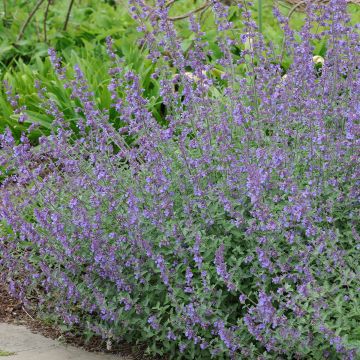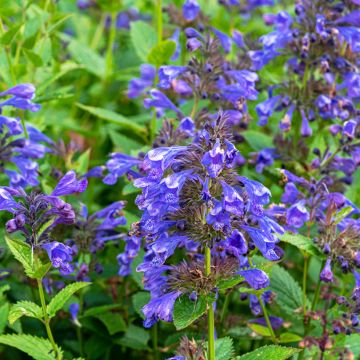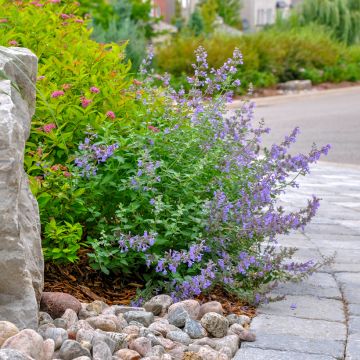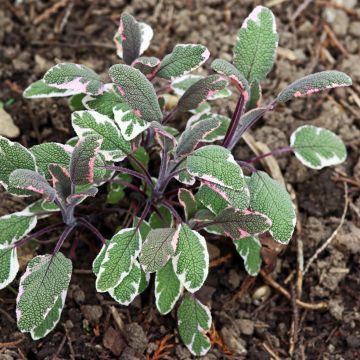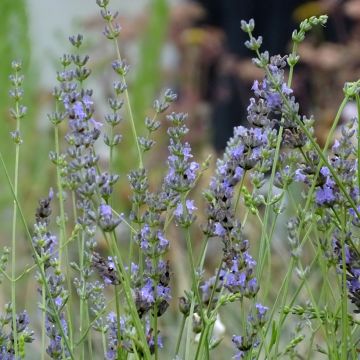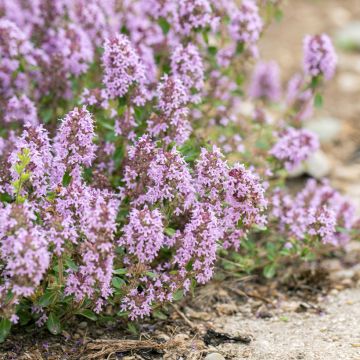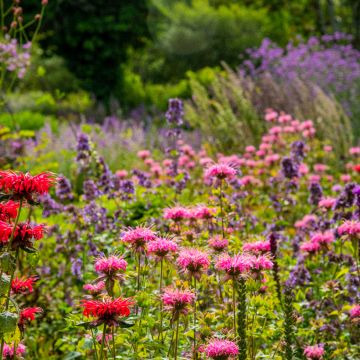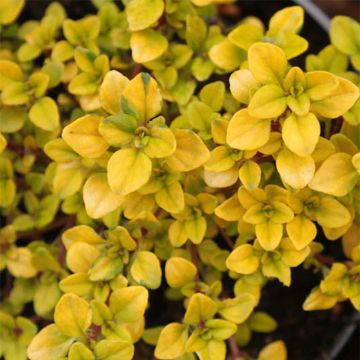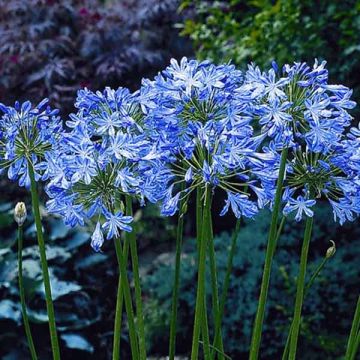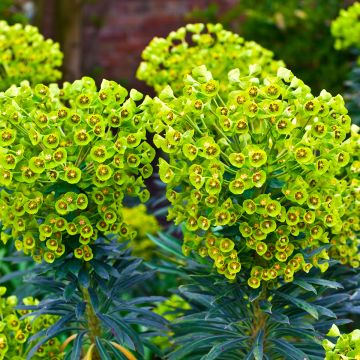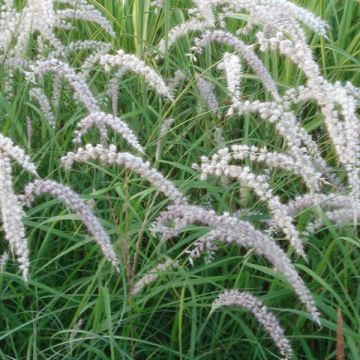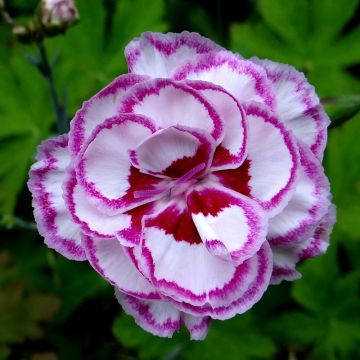

Rosmarinus officinalis Blue Cascade


Rosmarinus officinalis Blue Cascade


Rosmarinus officinalis Blue Cascade


Rosmarinus officinalis Blue Cascade
Rosmarinus officinalis Blue Cascade
Rosmarinus officinalis Blue Cascade
Rosemary
Why not try an alternative variety in stock?
View all →This plant carries a 12 months recovery warranty
More information
We guarantee the quality of our plants for a full growing cycle, and will replace at our expense any plant that fails to recover under normal climatic and planting conditions.
From €5.90 for pickup delivery and €6.90 for home delivery
Express home delivery from €8.90.
Delivery to Corse prohibited: UE law prohibits the import of this plant from mainland France to Corse as part of the fight against Xylella fastidiosa. Please accept our sincere apologies.
More information

Does this plant fit my garden?
Set up your Plantfit profile →
Description
Rosmarinus officinalis Blue Cascade is a creeping and trailing variety of rosemary, perfect for borders or pots. In a not-too-harsh climate, reserve a warm, dry, and well-drained spot with limestone soil to enjoy its deliciously aromatic evergreen foliage! Small blue-lilac flowers with darker veins, highly attractive to pollinators, appear in autumn and often in late spring as well.
Rosemary is a bush originating from the Mediterranean region and is therefore highly resistant to drought. It belongs to the large family of Lamiaceae, which offers us many aromatic plants abundantly used in our kitchens: thyme, savory, and sage being the most well-known. These plants produce large quantities of essential oils that repel herbivores, protect them from the scorching sun rays, and give them these highly appreciated scents.
The 'Blue Cascade' variety has a prostrate and compact habit, not exceeding 40cm (16in) in all directions. Its slightly twisted branches spread along the ground or trail if given the opportunity. In autumn, numerous small flowers of a very pretty pale blue, veined with blue-lilac, appear. They are highly appreciated by pollinators and sporadically reappear in late spring or even in the middle of winter. The elongated leaves are dark green and evergreen, with a folded margin that provides an additional adaptation to drought.
Like all rosemary plants, Blue Cascade appreciates warm, very well-drained, rather chalky, and poor soil. In regions with rainy winters, make sure that the soil is not waterlogged during the cold season, as the plant could then contract a fungal disease that would cause it to wither. Due to its Mediterranean origins, rosemary is not completely frost-hardy, so avoid exposing it to temperatures below -12°C (10.4°F). As always, hardiness will be better if the soil is perfectly drained.
Due to its trailing habit, Blue Cascade rosemary is capable of layering itself when the branches touch the ground, so you will have no difficulty multiplying it! Furthermore, its small size makes it perfect for use in pots. This way, you can decorate your balcony or terrace while providing yourself with some herbs. In rockeries or as groundcover in a border, it can be combined with other plants such as shrubby salvias (Salvia microphylla, S. gregii), polychrome euphorbias, or even Agave neomexicana for a more exotic atmosphere.
Report an error about the product description
Rosmarinus officinalis Blue Cascade in pictures






Flowering
Foliage
Plant habit
Botanical data
Rosmarinus
officinalis
Blue Cascade
Lamiaceae
Rosemary
Mediterranean
Other Herb perennials
Planting and care
Rosemary Blue Cascade is a perfect plant for poor and dry soil, even stony and limestone, perfectly drained in winter. The more well-drained the soil, the better the plant withstands winter. The richer the soil, the faster the rosemary grows, and the worse it ages and thins out at the base. The 'Blue Cascade' rosemary is a variety that ages better, without thinning out at the base, especially since it tends to naturally layer itself at ground level. It will appreciate a sunny and fairly sheltered position, even exposed to sea spray: hardy, it can withstand -10 to -12°C (14 to 10.4°F) but may suffer from a harsh winter. It is important to avoid watering it in the summer, as it is sensitive to Phytophthora, a fungus that attacks the plant's collar in hot and humid conditions. You can lightly prune after flowering to shape your rosemary and maintain a compact and ramified habit.
Planting period
Intended location
Care
-
, onOrder confirmed
Reply from on Promesse de fleurs
Mediterranean perennials
Haven't found what you were looking for?
Hardiness is the lowest winter temperature a plant can endure without suffering serious damage or even dying. However, hardiness is affected by location (a sheltered area, such as a patio), protection (winter cover) and soil type (hardiness is improved by well-drained soil).

Photo Sharing Terms & Conditions
In order to encourage gardeners to interact and share their experiences, Promesse de fleurs offers various media enabling content to be uploaded onto its Site - in particular via the ‘Photo sharing’ module.
The User agrees to refrain from:
- Posting any content that is illegal, prejudicial, insulting, racist, inciteful to hatred, revisionist, contrary to public decency, that infringes on privacy or on the privacy rights of third parties, in particular the publicity rights of persons and goods, intellectual property rights, or the right to privacy.
- Submitting content on behalf of a third party;
- Impersonate the identity of a third party and/or publish any personal information about a third party;
In general, the User undertakes to refrain from any unethical behaviour.
All Content (in particular text, comments, files, images, photos, videos, creative works, etc.), which may be subject to property or intellectual property rights, image or other private rights, shall remain the property of the User, subject to the limited rights granted by the terms of the licence granted by Promesse de fleurs as stated below. Users are at liberty to publish or not to publish such Content on the Site, notably via the ‘Photo Sharing’ facility, and accept that this Content shall be made public and freely accessible, notably on the Internet.
Users further acknowledge, undertake to have ,and guarantee that they hold all necessary rights and permissions to publish such material on the Site, in particular with regard to the legislation in force pertaining to any privacy, property, intellectual property, image, or contractual rights, or rights of any other nature. By publishing such Content on the Site, Users acknowledge accepting full liability as publishers of the Content within the meaning of the law, and grant Promesse de fleurs, free of charge, an inclusive, worldwide licence for the said Content for the entire duration of its publication, including all reproduction, representation, up/downloading, displaying, performing, transmission, and storage rights.
Users also grant permission for their name to be linked to the Content and accept that this link may not always be made available.
By engaging in posting material, Users consent to their Content becoming automatically accessible on the Internet, in particular on other sites and/or blogs and/or web pages of the Promesse de fleurs site, including in particular social pages and the Promesse de fleurs catalogue.
Users may secure the removal of entrusted content free of charge by issuing a simple request via our contact form.
The flowering period indicated on our website applies to countries and regions located in USDA zone 8 (France, the United Kingdom, Ireland, the Netherlands, etc.)
It will vary according to where you live:
- In zones 9 to 10 (Italy, Spain, Greece, etc.), flowering will occur about 2 to 4 weeks earlier.
- In zones 6 to 7 (Germany, Poland, Slovenia, and lower mountainous regions), flowering will be delayed by 2 to 3 weeks.
- In zone 5 (Central Europe, Scandinavia), blooming will be delayed by 3 to 5 weeks.
In temperate climates, pruning of spring-flowering shrubs (forsythia, spireas, etc.) should be done just after flowering.
Pruning of summer-flowering shrubs (Indian Lilac, Perovskia, etc.) can be done in winter or spring.
In cold regions as well as with frost-sensitive plants, avoid pruning too early when severe frosts may still occur.
The planting period indicated on our website applies to countries and regions located in USDA zone 8 (France, United Kingdom, Ireland, Netherlands).
It will vary according to where you live:
- In Mediterranean zones (Marseille, Madrid, Milan, etc.), autumn and winter are the best planting periods.
- In continental zones (Strasbourg, Munich, Vienna, etc.), delay planting by 2 to 3 weeks in spring and bring it forward by 2 to 4 weeks in autumn.
- In mountainous regions (the Alps, Pyrenees, Carpathians, etc.), it is best to plant in late spring (May-June) or late summer (August-September).
The harvesting period indicated on our website applies to countries and regions in USDA zone 8 (France, England, Ireland, the Netherlands).
In colder areas (Scandinavia, Poland, Austria...) fruit and vegetable harvests are likely to be delayed by 3-4 weeks.
In warmer areas (Italy, Spain, Greece, etc.), harvesting will probably take place earlier, depending on weather conditions.
The sowing periods indicated on our website apply to countries and regions within USDA Zone 8 (France, UK, Ireland, Netherlands).
In colder areas (Scandinavia, Poland, Austria...), delay any outdoor sowing by 3-4 weeks, or sow under glass.
In warmer climes (Italy, Spain, Greece, etc.), bring outdoor sowing forward by a few weeks.








































